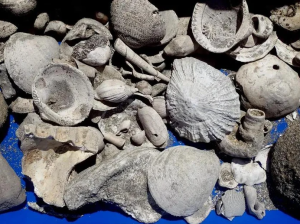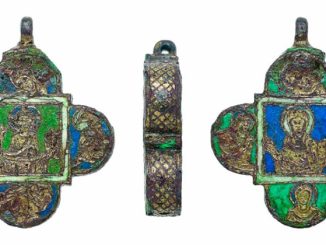Paleontologists describe the treasure trove of more than 300,000 fossils discovered at the Mangere Wastewater Treatment Plant (Auckland – Australia) as “finding gold right at your doorstep”.
According to an article published in the New Zealand Journal of Geology and Geophysics, the treasure found at the Mangere factory contains more than 300,000 fossil specimens belonging to 266 species, a collection of animals 3 million years old. The richest and most diverse ever excavated in New Zealand.

Some specimens in the huge collection of more than 300,000 items excavated from the Mangene Wastewater Treatment Plant area – Photo: AUCKLAND MUSEUM
The collection contains at least 10 species unknown to the world, which will be studied for future description and naming.
The fossils were first discovered during upgrades to the main pipeline that carries raw wastewater from the city center to the plant.
They discovered that the pipeline system had passed through a rich layer of ancient sediment, with specimens emerging one after another.
Many paleontologists and paleontological students were mobilized to work for many months under the management of Dr. Wilma Blom, scientist in charge of the Auckland Museum.
After several weeks of sifting, they counted more than 300,000 specimens belonging to 266 different species. Several thousand specimens have been processed and sent to the Auckland Museum.
The fossils are extremely diverse, including the remains of the world’s oldest snail – a genus of large snails – extinct saw sharks or ancient great white sharks, baleen whales… Most are extinct species.
The sedimentary area is part of the ancient seabed and is also home to the majority of species in the collection. Several other species, including 10 species of New Zealand’s iconic flax snail family, live elsewhere but may have been swept into this “mass grave” by floods.


